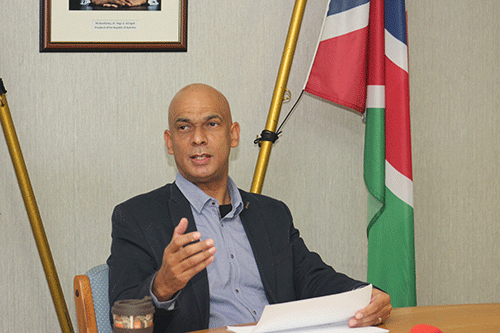TransNamib’s dire financial state, ageing infrastructure and equipment as well as the government’s inability to capitalise it has left the country’s railway company limping from one disaster to the next.
In the past four years, TransNamib has recorded 195 accidents that led to the death of 12 people.
“Some of the legacy challenges we have is that between 2010 and 2017, this company made an accumulative loss of about N$7 billion, so the backlog we have at TransNamib is of course funding, maintenance and the capacity to train our employees,” said Smith.
The railway services operator said the poor maintenance of the country’s railway lines contributes to about 60% of train accidents, while 20% is attributed to the public not complying with regulations and the rest is due to internal matters.
“About 20% of train accidents are due to the public not adhering to the rules and regulations, and 60% is the old rolling stock as well as the railway infrastructure that has not been maintained at the level it was supposed to,” stated TransNamib’s Johny Smith.
The company’s CEO said the remaining percentage is due to internal matters in terms of conforming to certain levels of compliance, which are addressed according to the accident investigation report.
Asked why TransNamib operates on poorly maintained railway lines, Smith said there has not been enough investment on the railway infrastructure, and the government is working on it but there are factors taken into consideration when operating in areas that are poorly maintained.
“We have to operate on a complete network to survive as a business and to ensure we deliver to our customers, so when the railway infrastructure is bad at a certain section – because it’s not the whole section that is affected, we then run the train at a lower speed,” informed Smith.
Last Tuesday, near Elisenheim on the northern outskirts of Windhoek, nine TransNamib fuel tanks, with a capacity of 40 000 litres, carrying jet fuel and diesel, derailed and exploded upon impact.
On 16 March, an employee of TransNamib lost his life while a second employee was seriously injured when a goods train derailed at its shunting yard in Swakopmund.
Four locomotives and more than 25 wagons, which include empty fuel and containerised wagons, were damaged in the incident.
The derailment caused several explosions, with raging flames reaching high into the skies.
Last Friday, a locomotive collided with four empty wagons at the Kranzberg station between Karibib and Usakos.
“We do have a lot of people from the public – either individuals or vehicles – that are crossing the railway lines at points where it is not supposed to be. The transportation act is clear that the train always has the right of way. On average, three persons were killed per year for the last four years,” stated Smith.
Another factor raised was the state of the locomotives – some of them as old as 50 years, which Smith said there is a programme underway to obtain new ones and source funding.
In an effort to bring TransNamib back on track to profitability, Smith, earlier this year at a stakeholder engagement, said the company needs N$2.6 billion for their five-year business plan to reach break even by 2023.
He added that trains in Namibia operate almost 4 000 km every day, which is more than 1.4 million kilometres every year.
In March, Nampa reported that public enterprises minister Leon Jooste was concerned over the parastatal’s survival, saying “I have reason to be concerned about TransNamib, as they are commercially somewhat distressed at the moment”.
- psiririka@nepc.com.na


